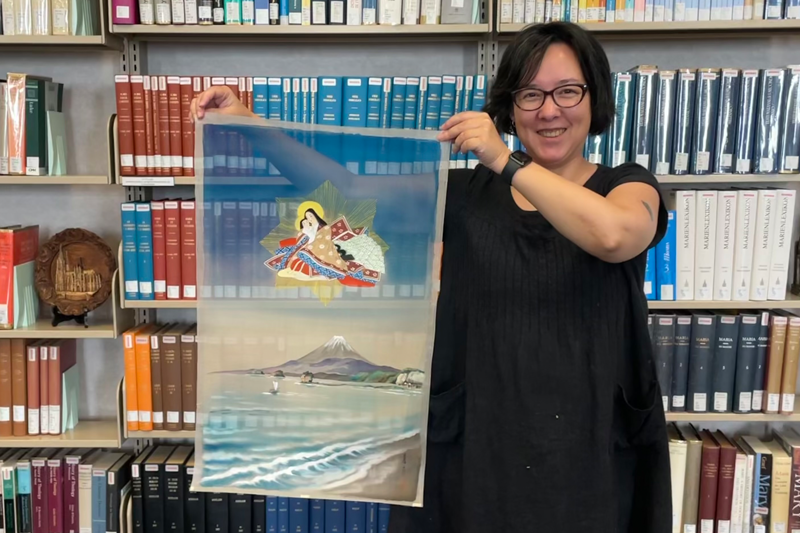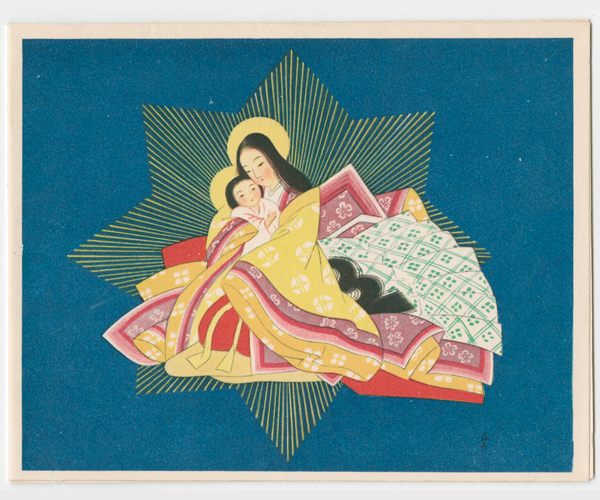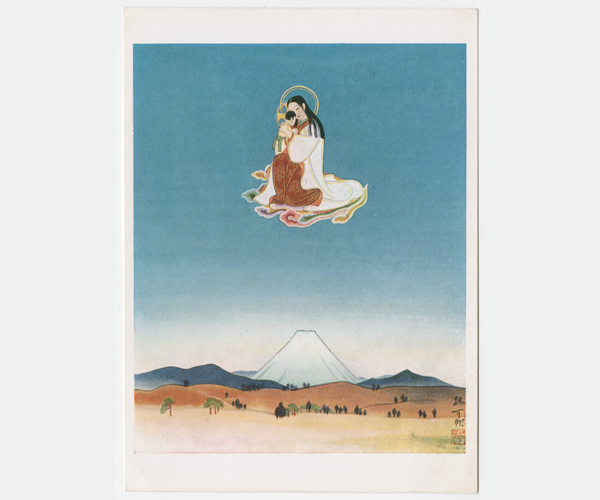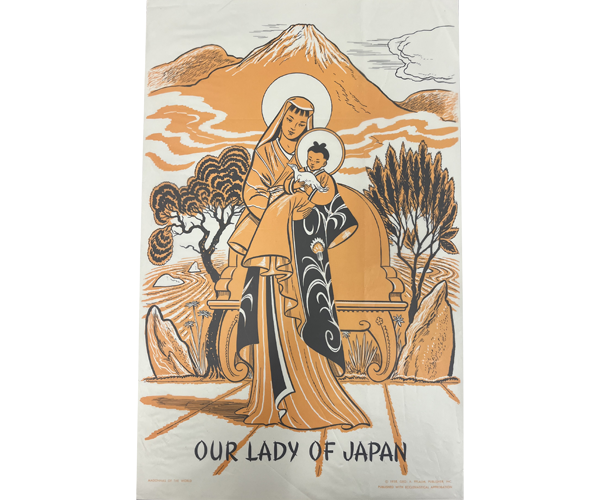Blogs

The Joys of Archival Surprises
By Hsuan Tsen
Tzu Ping Hong’s Mother of Love (Mother of Mercy) was a featured work in the Marian Library exhibit “Ex Oriente Lux”: Marian Art of Asia (Summer 2017). I was excited to see the exhibit since it had a deep connection to my ongoing research on visual exchanges between Japan and America in the late 19th and early 20th centuries. My current research is specifically interested in the work John La Farge produced in the wake of his trip with Henry Adams to Japan in 1886. La Farge, a first-generation French Catholic, produced a series of works loosely based on the bodhisattva Kannon (Guanyin/Avalokiteshvara) seated in meditation. Kannon had become known by that time as the “Merciful Mother,” an appellation marking a shift in gender from male to female and creating a strong resonance between Kannon and Mary. The presence of Tzu Ping Hong’s Mother of Love is clearly operating within a lineage of visual and conceptual conflation of Kannon and Mary. Seeing this exhibition marked the first moment I realized the breadth of what is contained within the Marian Library at the University of Dayton and that it might be a fruitful site for me to explore. Receiving the fellowship this past summer meant I finally had the opportunity to spend time exploring that breadth.
One of the greatest pleasures of academic life is immersing oneself in the wonders of an archive. This summer, I was not only granted the opportunity to spend time in the archives of the Marian Library; I was able to do so while supported, financially and intellectually, through the Marian Library Resident Scholar Fellowship. For five weeks, I pored through boxes, files and beautifully bound books.
Archival research starts with a question. In my case, I wanted to know more about how La Farge’s Catholicism might have influenced his interest in Kannon and his approach to making religious murals for Protestant clients. As happens with the best archival experiences, my discoveries extended far beyond these narrow parameters. With the assistance of Jillian Ewalt and Henry Handley, I was greeted with two carts filled with holy cards, Nativity cards and other popular print material from the Auguste Martin collection, Marian print ephemera, Marian holy cards and Marian postcards, as well as books that deepened my understanding, including John La Farge’s The Gospel Story in Art and the enormously influential Legends of the Madonna as Represented in the Fine Arts by Anna Jameson. I was fortunate to be able to look at the 19th-century bound album of drawings of Kannon by the Japanese artist Tani Buncho, recently returned from conservation. Finally, I encountered the enormously surprising Le Livre d’heures de Louis Legrand, which introduced me to the delightful and fascinating ways in which various art movements of the late 19th century could be combined.
The archival objects that proved to be most compelling to me were those made in Japan in the 1950s and 1960s. These works — some postcards, some holy cards, and some painted works — provide an intriguing echo to the syncretic quality of La Farge’s work over half a century earlier. I find his paintings of Kannon interesting partly due to the combination of subject matter and references to Western classical art. The same can be found in those made in Japan; in this case, the images of Mary reference the classical past of Japan’s history of art rather than that of the west. In Our Lady of Japan, Mary stands in front of Mount Fuji, holding Jesus in her arms, dressed in robes that seem to reference the Nara era. Behind her, a Zen rock garden can be seen. In the most spectacular work, Mary is dressed in Heian-era clothing. She is seated so that her robes and long hair spill out behind her while she holds Jesus in a tender embrace. Behind her, delicate lines of gold radiate out, forming a star. As if all of this weren’t spectacular enough, she is floating in the sky, the well-defined form of Mount Fuji rising proudly beneath her. In the last few days of the fellowship, I found a possible source for this image in the archive itself. A card, printed in the 1920s, features a very Western Mary, embracing Jesus, floating above Mount Fuji.
— Hsuan Tsen is a senior lecturer in the Department of Art and Design at the University of Dayton and the 2023 Marian Library Resident Scholar.
Speaking Engagement
Mark your calendars for 4:30 p.m. on Oct. 20, 2023. Hsuan Tsen will present on her research topic Our Lady of Japan: La Farge, Japan, and the Syncretic Images of Mary and Kannon in the Roesch Library Gathering Place.



